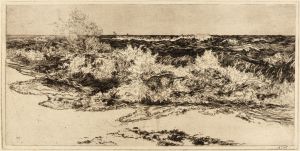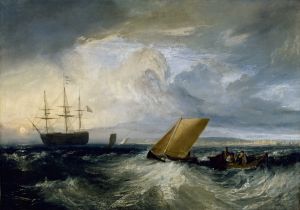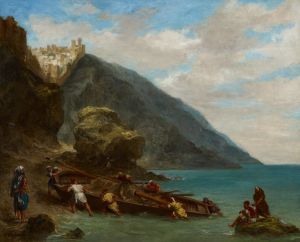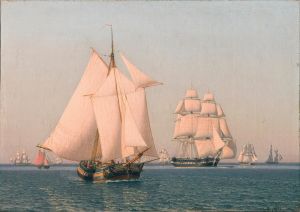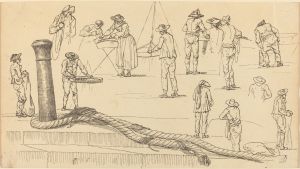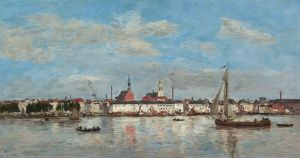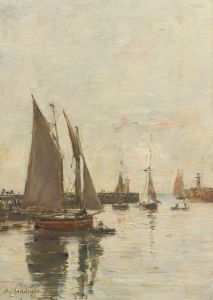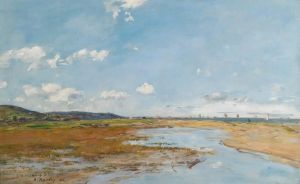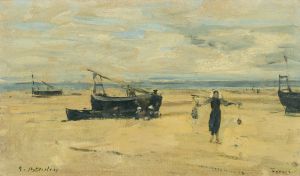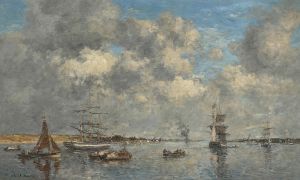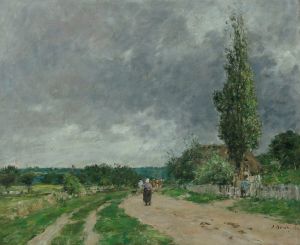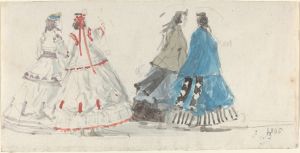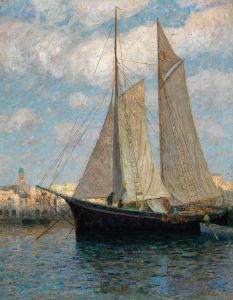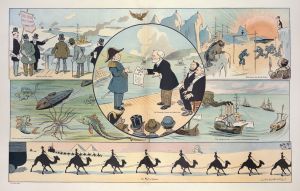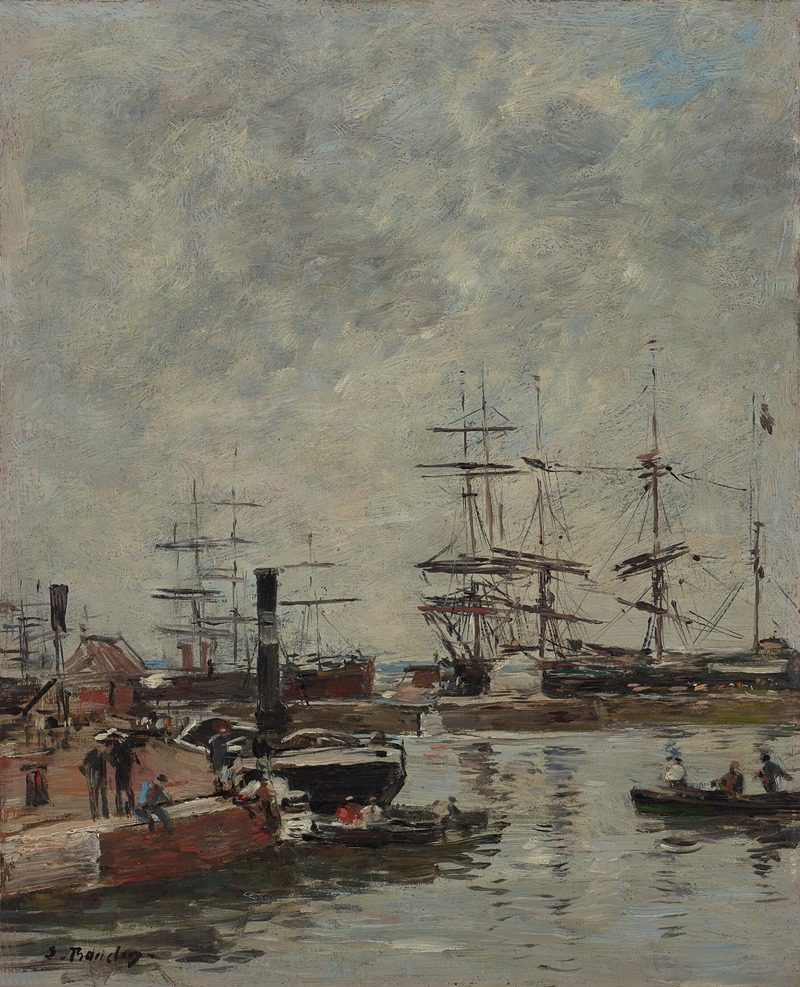
Port, navires à quai
A hand-painted replica of Eugène Boudin’s masterpiece Port, navires à quai, meticulously crafted by professional artists to capture the true essence of the original. Each piece is created with museum-quality canvas and rare mineral pigments, carefully painted by experienced artists with delicate brushstrokes and rich, layered colors to perfectly recreate the texture of the original artwork. Unlike machine-printed reproductions, this hand-painted version brings the painting to life, infused with the artist’s emotions and skill in every stroke. Whether for personal collection or home decoration, it instantly elevates the artistic atmosphere of any space.
Eugène Boudin's painting Port, navires à quai (translated as Port, Ships at the Quay) is a work by the French artist who is widely regarded as one of the precursors of Impressionism. Boudin, born in 1824 in Honfleur, France, was known for his depictions of coastal scenes, harbors, and skies, often capturing the interplay of light and atmosphere. His works frequently focused on maritime themes, reflecting his deep connection to the sea and his upbringing in a port town.
Port, navires à quai is an example of Boudin's fascination with harbor life and the bustling activity of ships docked at quaysides. The painting showcases his characteristic attention to detail in rendering the ships, water, and surrounding environment, while also emphasizing the transient effects of light and weather. Boudin's ability to depict the atmosphere of a scene, particularly the changing skies, earned him recognition as a master of plein air painting—a technique that involves painting outdoors to capture natural light and color.
The exact date of creation for Port, navires à quai is not definitively documented, but it is consistent with Boudin's broader body of work, which spans the mid-to-late 19th century. During this period, Boudin traveled extensively along the coasts of France, Belgium, and the Netherlands, drawing inspiration from the maritime landscapes he encountered. His works often depict ports and harbors, reflecting the economic and social importance of these locations during the 19th century.
Boudin's influence on the Impressionist movement is well-documented. He was an early mentor to Claude Monet, encouraging the young artist to paint en plein air and to observe the effects of light and atmosphere. Monet later credited Boudin with shaping his artistic approach. While Boudin's style is often categorized as pre-Impressionist, his focus on naturalistic depictions of light and his loose brushwork align closely with the principles of Impressionism.
Today, Port, navires à quai is recognized as part of Boudin's significant contribution to 19th-century art. His works are held in major museums and collections worldwide, including the Musée d'Orsay in Paris and the National Gallery of Art in Washington, D.C. However, specific details about the current location or provenance of this particular painting are not readily available in public records.
Eugène Boudin's legacy endures as a pivotal figure in the transition from traditional landscape painting to the innovative approaches of the Impressionist movement. His dedication to capturing the ephemeral qualities of nature continues to be celebrated in the art world.





